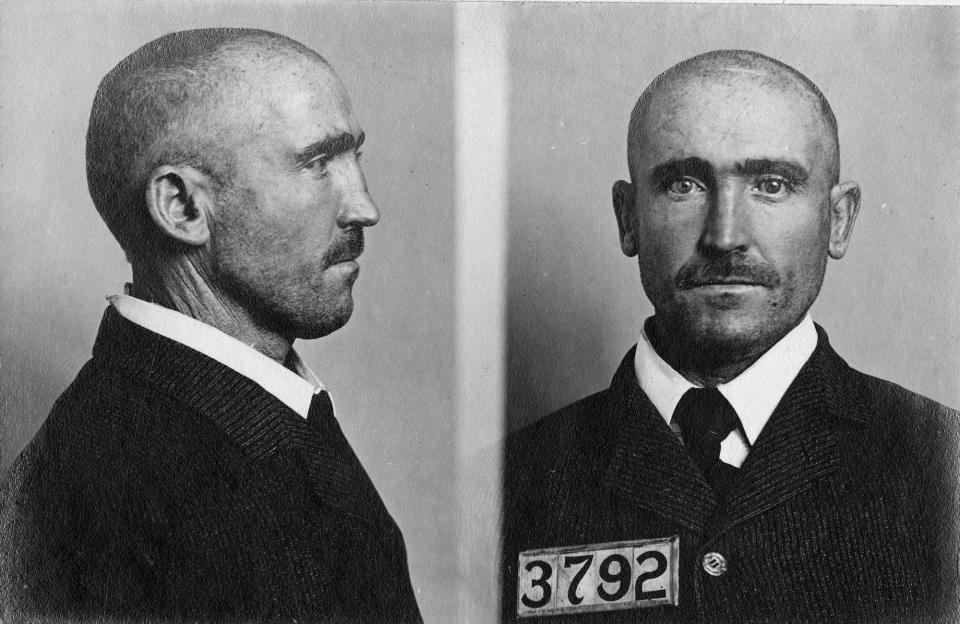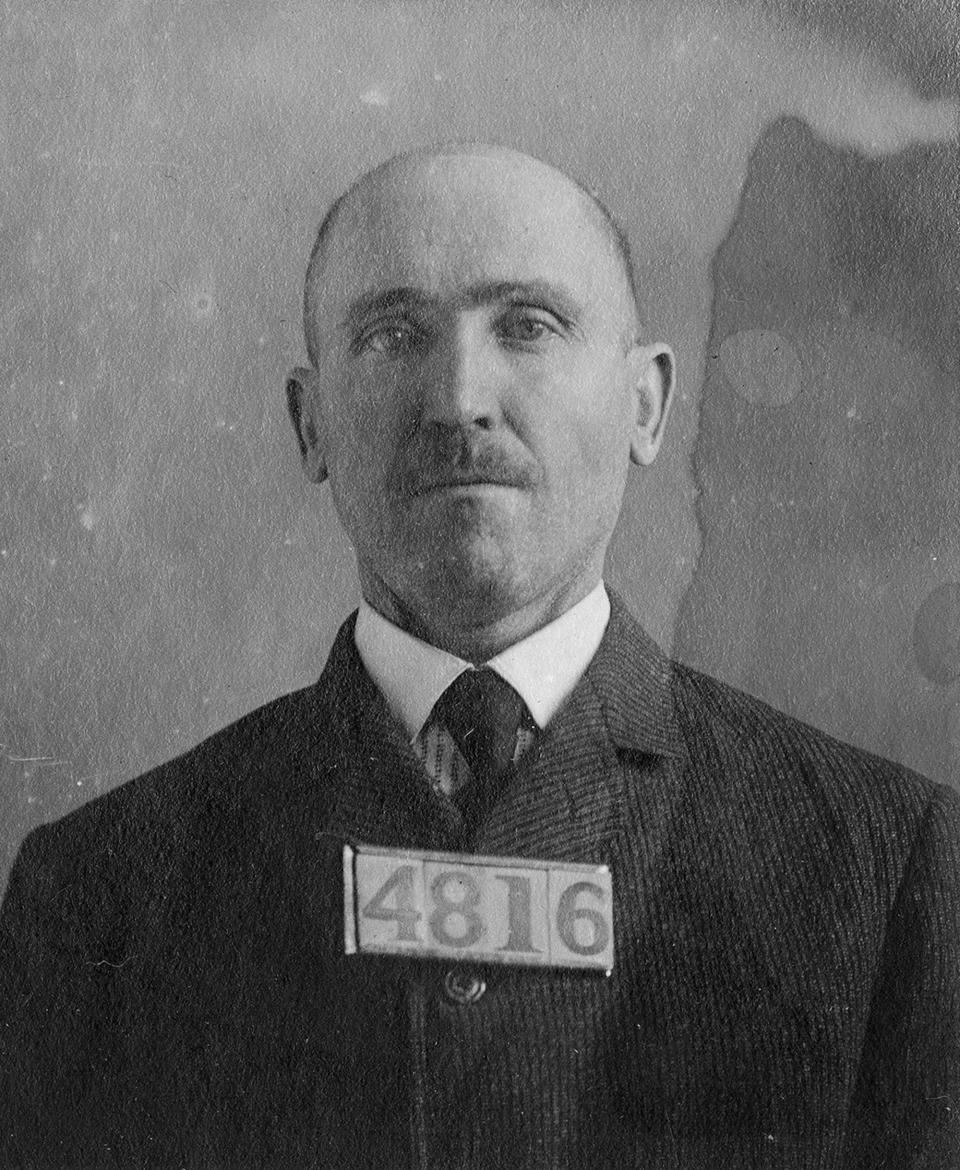ByGone Muncie: King of the Boxcar Thieves
New York Central’s Big Four Express Train No. 27 was two hours late when it rolled into Winchester’s station on a chilly April 5, 1911, evening. No. 27 pulled mostly freight and mail, but also a single passenger coach to ferry people on a route running from New York City to St. Louis. A few Winchestarians boarded and the train left for Muncie around 7:30pm. About 50 people were on board, including crew.

Just past Selma, a bandit who was hiding in the coach staircase broke through the front door. He leveled an old rusty 6-shooter and shouted, “hands up, everybody, and come forward with your money.” The Muncie Morning Star reported the next day that “women almost fainted and men sat in their seats scared stiff. The men in the first few seats, with knees weakened from fright, staggered toward the bandit and handed over their rolls of greenbacks and change.” Some people ran to hide in the back smoking section, while others found refuge under seats. The robber “declared he wanted only cash.”
Most passengers complied, but a few balked at the shenanigans. A Cleveland coal dealer named W.L. Porter indignantly tossed his pocketbook down in front of the thief, who demanded Porter pick it up and hand him the cash. The coal man tossed over $63 and snidely asked the thief if he was going to keep it all. To Porter’s surprise, the brigand passed back a dollar.
Another Cleveland businessman named Thomas Williams sat next to Porter and handed over only 5 cents, claiming it was all he had. Both men got a good look at the thief, as the red handkerchief covering his face kept slipping, revealing a skinny, middle-aged white man with a dark mustache. Eyewitness descriptions later varied, but everyone agreed that the bandit appeared to be a "hobo" or a "drifter."
As Muncie’s lights came into view, the thief backed-up toward the car’s front steps. He kept his old pistol trained on the passengers, most of whom now laid cowering on the floor. Hearing silence, conductor L.W. Zimmerman, who was hiding in the smoking section, opened the door separating the compartments to see if the robber had fled. The thief immediately fired a shot! The bullet grazed Zimmerman’s head and knocked him to the floor. A passenger in the back tossed Williams a gun, who began firing.
The bandit shot back as the No. 27 Express slowed to enter Muncie’s Big Four station. Horn blasts heralded the arrival of the train, along with screaming passengers and gunfire. The thief hopped off around Elm Street and disappeared into the shadows of Muncie’s red light district. He made off with about $300.
A manhunt ensued as Muncie Police, Delaware County sheriffs, and New York Central railroad detectives scoured the city. Given the bandit’s description, local law enforcement suspected Timothy ‘Sorghum’ McCoy, alias James Monroe. Dubbed in the Evening Press as “king of the boxcar thieves,” Sorghum was known to work “up and down on the Big Four lines, and is thought to be the leader of a gang of tramps who have been robbing boxcars.”
Two days later, New York Central detective Charles Snider caught Sorghum at the Big Four yards in Bellefontaine, Ohio. McCoy claimed ignorance of the robbery, avowing to have slept the night in question at a barn in Bradford Junction. The suspect was returned to Muncie and held in the Delaware County jail under the charge of “assault and battery with intent to kill.”
McCoy had a long rap sheet, including an arrest in 1888 for robbing a store in Farmland. He escaped from his subsequent stay at the Randolph County jail after briefly holding the sheriff’s wife hostage in exchange for the cell’s keys. The Evening Press reported that “McCoy is a bold thief and is wanted at numerous places. He claims Anderson as his home.”
Under the alias "James Monroe," McCoy was found guilty in 1897 for robbing a train in Peru and served two years at Michigan City’s penitentiary. In 1900 he was being held in the Madison County jail for vagrancy when, with fellow inmates, he pried open a hole in an outside wall to escape. The Elwood Daily Record reported that “blankets were then tied together and a rope made which reached the ground.” McCoy was caught, but made a second escape attempt a week later. After another robbery conviction in 1907, Alexandria’s Times-Tribune reported that McCoy would begin serving his seventh stint at Michigan City. He was released in 1910.

But in April of 1911, Sorghum McCoy found himself in the Delaware County jail, accused of robbing Big Four Express No. 27 on April 5. Late in the month, Porter and Williams made their way back to Muncie and positively identified McCoy as the bandit, but not all witnesses were so sure. J.L. Goldberg of New York and Rose Meredith of Franklin, Indiana both swore the robber had a sandy mustache, while Porter and Williams remembered it black.
Despite witness discrepancies, Delaware County prosecutor Harry Long felt he had enough evidence for a trial. McCoy was defended by Anderson attorney Phillip O’Neil. At his arraignment, the Evening Press reported that “people expected to see a fierce burly ruffian, but instead were surprised at inspecting a meek appearing knight of the road who did not have nerve enough to beat a carpet.”
The state called a series of witnesses, including Porter and Williams. A Winchester grocer named M.F. Bailey testified that he saw the defendant a few hours before the train left. The Bradford Junction farmer whose barn McCoy claimed to have slept in, told jurors no one was about the place the night of April 5. O’Neil attempted to cast reasonable doubt by calling witnesses who had differing descriptions of the bandit. Alas, it wasn’t enough and the jury found McCoy guilty as charged. O’Neil filed a motion for a new trial in August, but Judge Frank Ellis dismissed it and sentenced Sorghum McCoy to five years in prison.
He was released early in 1915 after Ellis and a Michigan City prison official wrote letters to the parole board asking for clemency. McCoy appears only a few more times in local newspaper records, including in 1918 when he was “brought into Madison County court on a charge of train riding. He is 54 years old and appears feeble and meek.” I can’t find any valid record of Timothy "Sorghum" McCoy after this.
One final note, many thanks to Michael Vetman of the Indiana State Archives and Records Administration for digging out McCoy’s mugshots. Having such high quality photos reminds me I’m writing about very real people in time.
Chris Flook is a Delaware County Historical Society board member and a Senior Lecturer of Media at Ball State University.
This article originally appeared on Muncie Star Press: ByGone Muncie: King of the Boxcar Thieves

